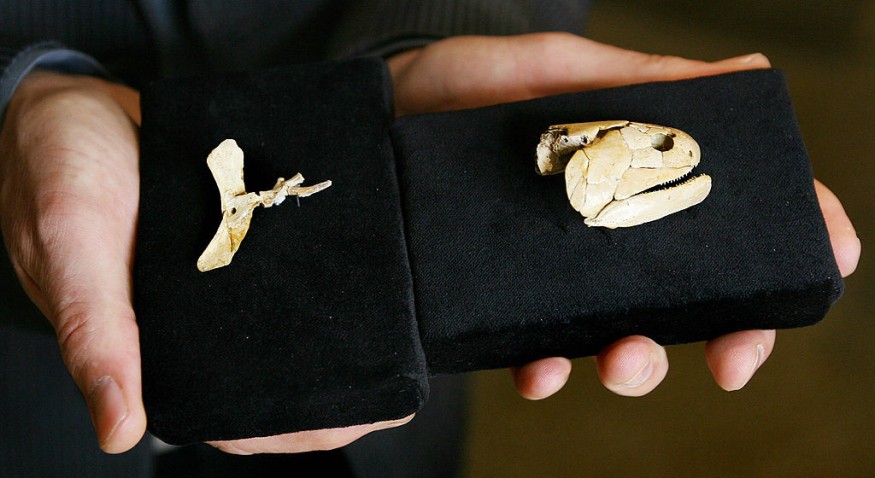Loads of small, petrified fecal pellets stuffed into a 9-million-year-old fish frontal bone were discovered by researchers, rendering yet another first in the world of paleontology.
The coprolites or tiny fossilized poops, were left behind by foragers which are most likely insects that consumed the rotting skull of the salmon, including its brain.
The 9-Million-Years-Old Fecal Pellets

The larvae vomited strings and clumps of round coprolite pellets, which are about 0.1 inch in length, while they nibbled on the corpse's tissue. Even though they were little, the pellets piled up each time. When the ravenous foragers were through, they had abandoned dozens of pellets, enough dung to completely fill the fish's skull.
A location in southern Maryland that preserves specimens from 18 million to 8 million years, within the Miocene era, known as Calvert Cliffs is where the coprolite-filled relic was discovered.
An underside ambush scavenger described as a stargazer, is believed to be the owner of the brain which belongs to the species Astroscopus countermani, and tiny, oblong coprolite pellets like that are classified as Coprulus oblongus.
Aside from the fecal-stuffed head, the researchers looked at additional coprolite powder formations at the site, which were concentrated in shallow strata, attached to petrified snail and clam seashells, and gathered surrounding intact crustaceans. Other remarkable specimen in the assemblage was a 7-inch-long coprolite that were excreted by a vertebrate, likely an old crocodilian.
Investigators stated in the March 2022 edition of the magazine Rivista Italiana di Paleontologia e Stratigrafia that extensive burrows were already carved out by unidentified creatures consuming the dung or excavating a home.
As per the findings, several Tertiary aquatic species, particularly predators as well as other fishes, tortoises, alligators, seagulls, and seals, have long been noted from Calvert Cliffs specimens.
Also read : Bug-Like Fossil From 500 million Years Ago Explain Evolutionary History of Spiders and Scorpions
The Discovery of 'Wonderfully-Shaped' Fossilized Feces
A range of fossilized remains have been recovered along the cliffs, however microcoprolites generated by invertebrates like the coprolites in the fish head weren't investigated as well as feces from backboned creatures, according with research.
According to paleontology researcher at the Calvert Oceanic Institute in Solomons, Maryland and senior research written Stephen Godfrey, the small pellets within the brain were identified as fecal pellets on the grounds of their extremely typical dimensions, form, and biochemical makeup.
Godfrey also informed Live Science in a statement that non-destructive X-ray spectroscopic indicated that these microcoprolites included comparatively high quantities of parathyroid hormone, which are often seen in ancient feces.
Invertebrates, make micropellets like this, but because the coprolites came from an aquatic organism, experts confidently exclude out geostationary pests as the creators. Maritime sprays were also eliminated since they devote majority of their adult hood stuck to stones, while acorn larvae were eliminated since they defecate beyond their tunnels.
Since the fecal pellets were discovered in the deepest portions of a 2-inch diameter fish brain, they are mostly defected out by an invertebrate that can compress its feminine physique into small gaps.
"It would certainly eliminate out mussels and oysters, keeping polychaetae worms and other types of larvae amongst probable choices," Godfrey explained in a letter. According to Godfrey, the experts also discovered that all of the little pellets were roughly comparable and form.
In addition, he was particularly astonished and genuinely pleased by the coprolites' consistency when contrasted to other vertebrates' unevenly structured fecal discharge.
© 2025 NatureWorldNews.com All rights reserved. Do not reproduce without permission.





